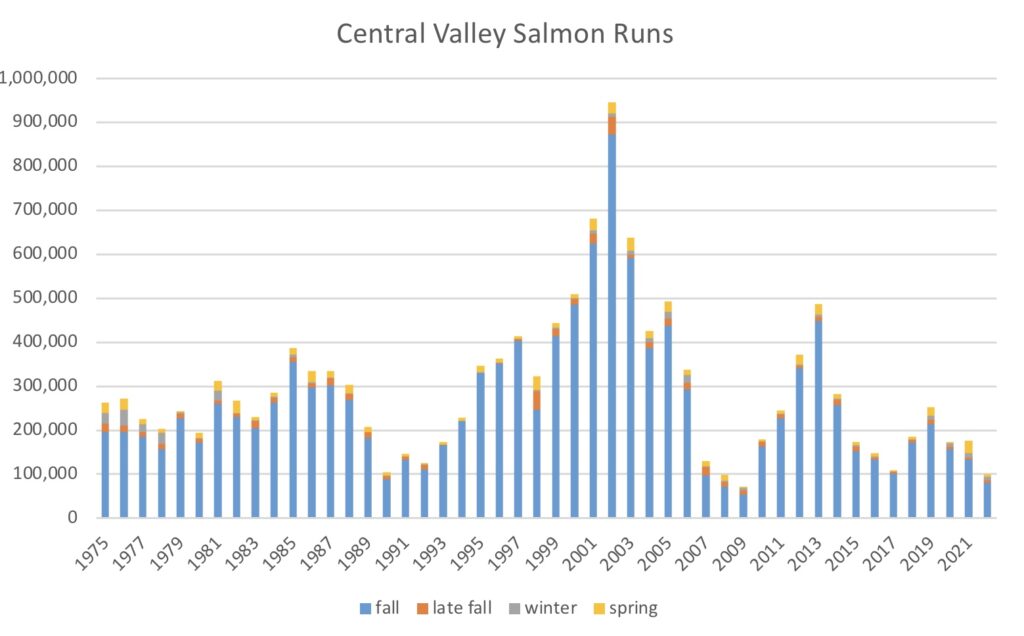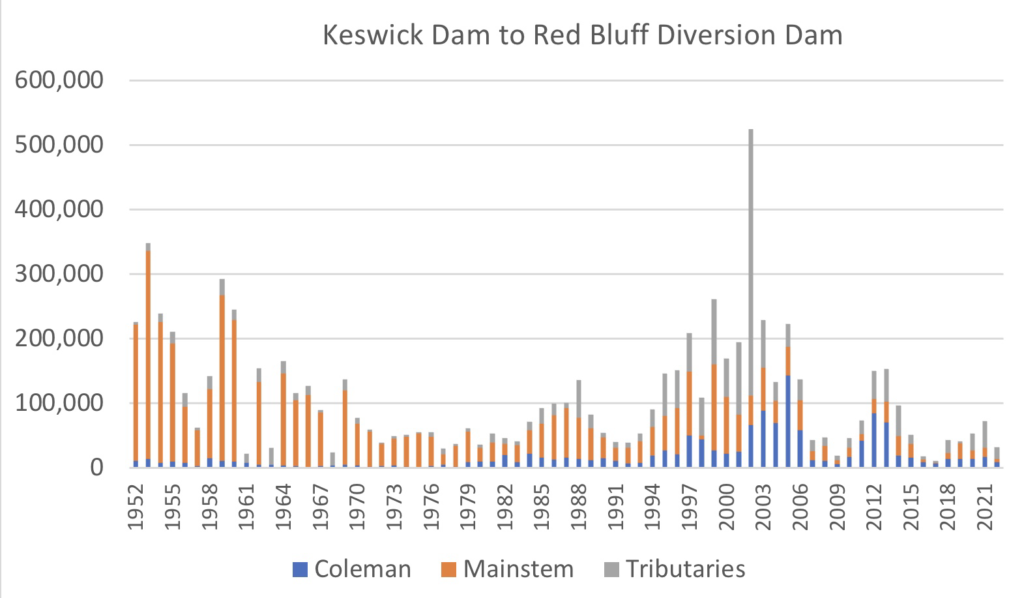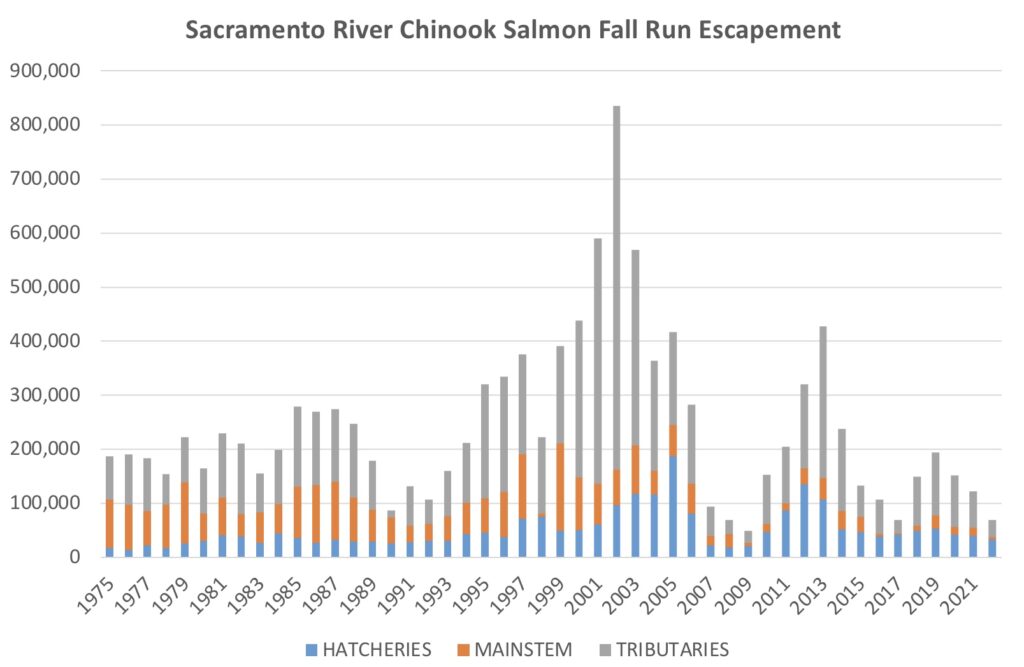Current proposals by various governmental officials and agencies are not adequate to protect public trust fisheries. The Central Valley fall-run salmon escapement fell below 100,000 in 2022, levels not seen since the 2008 and 2009 drought (Figure 1). Spawning numbers in the upper mainstem Sacramento River near Redding were below 5000 in 2022, record low levels also not seen since 2016 and 2017 (Figure 2). Fall-run salmon escapement numbers for the entire Sacramento River showed a similar pattern (Figure 3). Salmon fisheries were closed in 2009 and 2023 to ensure against over-fishing.
The upper mainstem fall-run salmon population was historically the backbone of Central Valley salmon escapement and fisheries. That population and its natural-born component has crashed and is need of immediate attention. Otherwise, hatcheries will be shut down, no fisheries will be allowed to protect wild fish, and salmon will go the way of the condor. Aggressive action is needed to save the salmon and salmon fisheries.
In a December 2023 post, I suggested California adopt mark-selective salmon fisheries – harvest of only hatchery fish and catch-and-release of unmarked wild and hatchery fish (only about 25% of hatchery smolts are marked). This would protect wild salmon and allow harvest of hatchery salmon. It is a strategy that is now commonplace in the Pacific Northwest. 1
Informal feedback on the suggestion has been mostly negative. Commercial fishermen really don’t like the idea, because they would prefer a quota. Otherwise, they would have high bycatch mortality (20+%) of wild or unmarked fish. They already kill too many undersized fish that they have to release. Sport fishermen have similar concerns, although they admit they use gear and techniques that have lower release mortality. Fisheries agencies simply don’t like the added management problems. In the end, all these entities would rather close the fishery down next year and let the stocks rebuild. However, the rebuilding will take years. Many hatchery salmon will go to waste.
There is a solution that would allow salmon fisheries without driving wild salmon populations to extinction. All hatchery smolts should be marked to differentiate them from wild (natural-born) salmon. The practice would allow mark-selective fisheries. All hatchery smolts should also be transported to the Bay or coast for release. This would ensure high hatchery smolt survival and relieve the competition with wild fish in rearing and migrating reaches of the rivers and Bay-Delta estuary. It would also likely reduce predation on wild juvenile salmon in the rivers and Bay-Delta estuary, because hatchery smolts in rivers and the estuary attract predators.
To participate in the fishery, commercial and sport fishermen would have to modify gear and methods to reduce bycatch mortality. Agencies would have to provide more education/information, rules, and more monitoring and assessment. Through information gathering and experience, it may be possible to focus fishery effort toward areas and times more frequented by hatchery salmon and where bycatch mortality is minimal. With these additions, the fisheries agencies could focus more on wild salmon recovery, while ensuring the hatchery program and its fisheries are efficient and effective.

Figure 1. Total escapement of four salmon runs in the Central Valley 1975-2022.

Figure 2. Upper Sacramento River Fall-Run Salmon escapement from 1952-2022. Coleman is hatchery counts. Others are mainstem and upper Sacramento River tributary spawning surveys.

Figure 3. Sacramento River Fall-Run Salmon escapement from 1975-2022.
